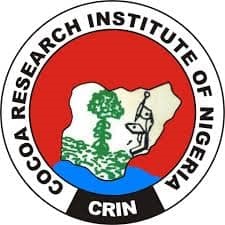Information and Documentation
Library Organisational Structure
In 1970, the Institute was administratively organized into research and services. The Librarian who was responsible to the Director headed the Library and Information Division. In 1981, the Library and Information Division was used to create then Extension Research Liaison (ERLS) Division and which last till 1997. This had in no way changed the library operations under five units as follow:
Technical services unit: which handles book selection and acquisition, cataloguing and classification.
Reference unit: in charge of circulation, all types of Library loans, serials, and literature search and readers’ enquiries.
Photographic unit: takes experimental and social photographs of the Institute.
Printing unit: print all Institute printing materials including annual reports and information booklets.
The LID Department came into operation with the creation of the (8) eight departments according to the 2004 NARIS Condition of Service. Various units of the library under the 2007 Reforms exercise were later changed into (3) three divisions:
- The Library Division was divided into (3) three sections:
- Reference section: takes charge of all types of library loans, serials, literature search and readers’ inquiries.
- Acquisition
- Circulation
- Publication Division was divided into (2) two sections:
- Documentation
- Printing
- Information Communication Technology
- Website: this medium is used to complement sources and information available on mandate crops. The website relates information on the institutes as well as information on scientists’ current research works and research publications. The Website and its maintenance will be by the unit.
- Automation: Library automation commenced in the year 2008. The software in use is Koha. The software was found suitable with peculiarity of CRIN that has spread research mandate in all the geo-political regions of Nigeria. The experimental stations of CRIN in six state services these regions. The sub-stations are headed by researchers who need to continue their research work which requires provision of information available in the library. Presently, only three stations have a mini library. Internet base automated software currently in use for automation of Headquarters’ library resources will readily make library holdings available to Scientists’ working in other geo-political Zones of Nigeria where CRIN sub-stations are located. This involves data storage of all Library resources and digitalization of all serials and books etc
- Electronic resources unit: Acquire TEEAL CD or LAN TEEAL as alternative to hard copy materials.
Acquisition Policy of CRIN Library
The Library policy permits comprehensiveness of collections on CRIN mandate crops: cocoa, kola, coffee, cashew, and tea in the research programmes within the financial appropriation to the Institute.
It is natural to expect the Institute Library to be a good cource of information on all its mandate crops, in paper and electronic format.
The Library acquires relevant publication on the Institute mandate crops base on different research disciplines.
Research articles on CRIN mandate crops are spread mostly in periodicals that are Internationally based. There are few books available on CRIN mandate crops when compared to information available in the periodicals. Periodicals are very expensive and could only be purchased in foreign currency.
Materials Resources Arrangement
Materials on CRIN mandate crops also appear in newsletter arranged alphabetically, while books are catalogued using the Universal Decimal Classification Scheme. The Pamphlets are on display shelves under Subject heading e.g Agronomy.
The books are classified and catalogued on 5 by 6 inches card under author titles and subjects using AGROVOC thesaurus to avoid drop down in collection usage. The cards are filled in a wooden box-catalogued alphabetically.
Drop down means collection that is not specific on a subject matter. Example is a case where 10 materials are selected matter. Example is a case where 10 materials are selected for a user and only 3 of these materials tallies with the need; 7 other materials are dropped down.
The journals are recorded in cardex a file like compartment in a box, with replaceable 5 by 6 inches ruled cards. Books are arranged on each shelve of about 1 meter wide from the top shelve down the line to the last shelve on a row.

Inhouse Publications
Explore some of our featured publications
Material Resources
The collections of the Library include the followings:
Periodicals: Research experiment on the Institute mandate crops take much time from stage of conception to the stage of completion (i.e From planting to fruiting) when compared to arable crops. Information on the crops was available mostly in periodicals. Periodicals itles have been reduced from 240 titles to 50 absolutely titles apart from gift items.
The periodicals titles cover science in general and various aspect of agriculture with special emphasis on treecrops. Others collections include librarianship, administration, accounting, nursing and current affairs. Annual reports, Newsletters, Calendars, from other agricultural establishments and several government publications of general interest form parts of the collection. Priorities are given to relevant publications on tropical crops.
Books
Information available on CRIN mandate crops in books is few and this influence slow rate of books acquired in the Institute’s Library. Other books items available are monographs, conference proceedings, seminar reports, symposia, and other books compiled on research in the relevant fields. Acquisitions of most information is out of date before publishing.
Reprints
A sizeable number of reprints on scientists’ research papers acquired. Only few Research Officers make their publication available in the library. The policy mandating Research Officers to submit their publications to the Library have not been followed. Also, pamphlets are being collated on information about the various aspects of the work done in Institute.
Electronic Media
Electronic media uses devices that transform waves into electronic signals converted to things that could be heard or seen on television. CD ROMS on related research findings are acquired through gift and exchange.
Paper cuttings
New paper cuttings likely to be of interested to CRIN authorities and Staff are selected and preserved in the Newspaper albums and made available to those who request for them.
Audio Visuals Materials
Audiotapes and visuals on CRIN research works, plantation, and workshops are compiled for use in the media center of the Library.
Gift and Exchange
Periodicals and books from CTA, CABI, and other agricultural institutions are received through gifts and exchange. Annual reports, technical bulletins, and other occasional publications were given on the basis of gift and exchange by the Institute.
Storage and preservation of materials
Steel racks are used for shelving, while books are display on wooden racks. Pamphlets are stored on steel boxes made locally. Blocks of drawing and photographs used in printing CRIN publications, especially the annual reports and special monographs are stored in a file cabinet.
Library users
The library a users population of about 700 within the institute, including research staff who embarked on post graduate studies M.sc degree – PhD, technical officers, Administrators, Lbrarians, Accountants and Agricultural students on vacation studies. There are other users of the library coming from other research institute Tertiary institutions, Universities, Polytechnics, colleges of education and school of Agriculture.
Library services
Openly hours and the use of libraries.
The openly hours of the libraries tallies with the time of resumption of staff that is 8am and closure at 4pm. No Saturday and Sunday services.
Library roles and regulations are not rigidly applied. Everyone has access to the library, but those who are not CRIN staff will have to be recommended from there organisation before being allowed to use the CRIN library services.
Website and internet services
Website
The library, information and documentation department collate input for the website and maintain it. The website address is www.crin.gov.ng
Internet services.
The use of Internet service at CRIN began some years ago without internet facilities on ground, when the email address was created on yahoo website for use of the institute by this department. It was shifted from conventional way of postal services for sending correspondence both locally and internationally. In the year 2004, odua tel; a national internet broker was awarded a contact to establish an internet link; with indoor unit (IDU) and outdoor unit (ODU).
Current Awareness Services
The Library publishes the accession list, indexes and abstract on CRIN research. Reprint Holdings in the library are list of research publications published as part of occasional library publications. Acquired books are stamped with accession and classification number and put on display before they are permanently shelved. Current periodicals are display on journal racks. Selective disseminations of information (SDI) on research topic of researchers are compiled and sent to each researcher.
Bibliography services
List of publication on each crop are produce occasionally apart from accession list that are being produce weekly. The list are issued serially and are ultimately combine into formal bibliographies. Also list of periodicals are published on arrivals, and the list of research publications by CRIN staffs.
Press cuttings
We take the leading daily news paper and make useful cutting from them. Albums of event are built out of the news paper cutting on information relating to the institute or any work being done on it and any other information that may be of general interest to the staff.
Editorial
The library takes active part in editing the institute’s annual reports and other publications. The printing unit in the department designs the format to give a book a good fit. The department does lamination and binding of books. We make sure that all bibliographic information is given at the appropriate place.
Viewing centre
The viewing centre was provided to relate documentary information on archives to newly employed staff and the public visiting the institute. This is very useful especially during the rain, when experimental plots cannot be visited for information and demonstrations to the public. Videotapes, TV sets, and video players are used for this purpose.
Photographic services
The photographic services produce photographs and slides in colours. Photographs of experiment on plots are taken as specimen for research.
Reprographic services
There are sharp photocopiers in the library that serve the staff of the institute and the public. The machine have been extremely useful for photocopying of library materials by scientists and the public.
Inter library loans services
Strong interlibrary loan arrangements with many agricultural and universities libraries in Ibadan have been pit in place. To ensure prompt service, library staff are sent to co- operating libraries in Ibadan to collect publications required and to ensure save return of such publications after use.
Collaboration with other institute
Letter of introduction are received from other libraries for there users.
Also, we give letters of introduction to CRIN staff willing to use other libraries; the letters have accorded some staff membership status of some other libraries.
Information bulletin
The Department publishes monthly information bulletin to bridge information gap between staff and the management. Information on activities of management, workshops, conferences, health issues, socials, weather information and scientists publication were related in the bulletins.

